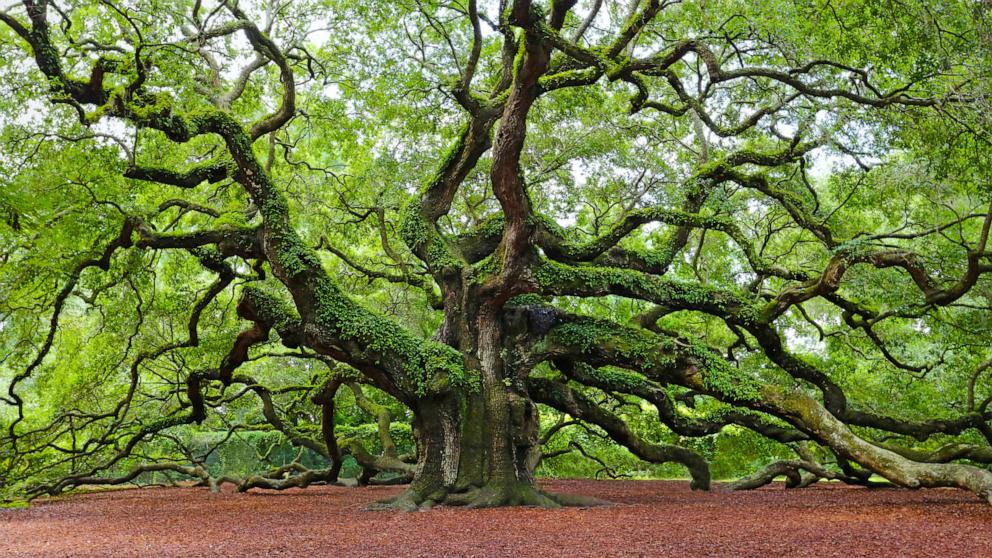The conversation around action on climate change can often be too loud for people to have a measurable impact, but on this Arbor Day, change can start at the grassroots.
Planting a tree in honor of Arbor Day is a long-standing American tradition that dates back to 1872, and while climate and landscape factors have changed since the holiday’s inception, the motivation remains vital.
“There’s never been a more important time to plant a tree,” Arbor Day Foundation Executive Director Dan Lambe told ABC News ahead of the annual holiday.
“As we look at our climate change and extreme heat, as we look at the challenges in our cities and towns, planting a tree on Arbor Day is one of the simple things people can do to Be a part of the solution for your neighborhood, Lembe said: for the society and the planet.
According to the National Forest Foundation, in one year, a mature tree can absorb half a metric ton of carbon dioxide from the atmosphere.
Nationwide, U.S. forests offset 16 percent of greenhouse gases emitted from transportation, industrial heating and other climate pollutants, according to the foundation.
When was Arbor Day established?
According to the Arbor Day Foundation, the history of Arbor Day dates back to 1872 in Nebraska, when a local newspaper editor named J. Sterling Morton proposed closing the arboretum at a State Board of Agriculture meeting.
Trees provide building materials and fuel and act as windbreaks to preserve soil for agriculture, and the lack of ground cover was detrimental, according to the foundation in Nebraska.
Later that year, the first official Arbor Day was celebrated on April 10, 1872, where prizes were awarded to communities and individuals who could plant the most trees in one day, according to the foundation, which estimates it planted about 1 million trees. has been .
Fast forward to 2024, Arbor Day is now celebrated in all 50 US states and traditionally falls on the last Friday of April each year.
Understanding difficult areas
Planting trees that will have the best chance for sustainable growth means understanding the native landscape and its challenges in your local environment.
According to the agency, the USDA plant hardiness zone map is a standard for determining which perennial plants are best grown in a given location.
The interactive map, where people can enter their local zip code to determine the area’s hardiness, is based on the average annual minimum extreme temperature in winter.
There are 13 zones on the USDA map, the first being the coldest and the 13th being the warmest. On average, there is a temperature difference of 10 degrees between each region.
Dr. Gary Chastegner, a professor of plant pathology at Washington State University, told ABC News, “Hard zones are really a reflection of temperature extremes.” “There’s a common saying that’s used, ‘plant the right tree in the right place,'” Chastagner said.
To find the right tree and the right location, Chastagner and the Arbor Day Foundation recommend considering the tree’s height, canopy spread, growth rate, and the tree’s sun, soil and moisture needs before planting.
Using Southern California as an example, trees must be drought tolerant, adaptable to a variety of soil types, and able to resist oak root fungus, a common disease-causing fungus found in much of California.
According to the Rose Arbor Foundation, trees recommended for Southern California hardiness zones include river birch, Cypress Leyland, lacebark elm, silver maple, American sweetgum and hackberry.
Across the country in Michigan, the hardiness zone determines a different set of trees that can survive and thrive in the area.
Norway spruce, American mountain ash, weeping willows, mugo pine, and oysterwood are just a few examples of trees that are best equipped to survive and thrive in the Great Lakes State.
“It’s important for the people of Michigan to know that they shouldn’t plant palm trees as much as they might like palm trees,” Lembe joked. Likewise, in lower Florida, you don’t want to plant trees that grow in the upper Midwest.
With hardiness zones in mind, Professor Chastagner recommends diversity among tree species for the best chance at resilience.
“Don’t plant the exact same species, because if you do, the landscape may not be resilient to climate change, or if you have an invasive pest, all those trees are susceptible.” Chastagner explained.
Visit the Arbor Day Foundation’s online tree finder tool to learn about the best trees to plant in your particular area.
Protection of natural forests
In addition to planting local trees, on this tree planting day, it is important to recognize the role of natural forests in reducing the effects of climate change.
“Conserving existing forests is one of the most cost-effective ways to mitigate climate change by keeping greenhouse gas emissions and carbon dioxide out of the atmosphere,” Aaron Paul, vice president of Aurora Sustainable Lands, told ABC News.
According to the Environmental Protection Agency (EPA), forests and woodlands cover more than 822 million acres of land in the United States, about 36 percent of the country’s total land area.
According to the agency, forests absorb carbon as they grow and act as a carbon storage “bank” that helps offset fossil fuel emissions. atmosphere
Aurora Sustainable Lands is the largest natural forest manager in the United States, managing 1.65 million acres of forest land in 14 states.
On this tree planting day, Paul emphasized the importance of preserving natural forests, minimizing land use change and creating limits for industrial expansion.
“It’s most important to remember how climate-resilient and climate-mitigating tools forests are,” Paul said. “We need climate impact now, we need emissions reductions now, and trees have been doing this for millions of years.”
#Arbor #Day #plant #trees #fight #climate #change
